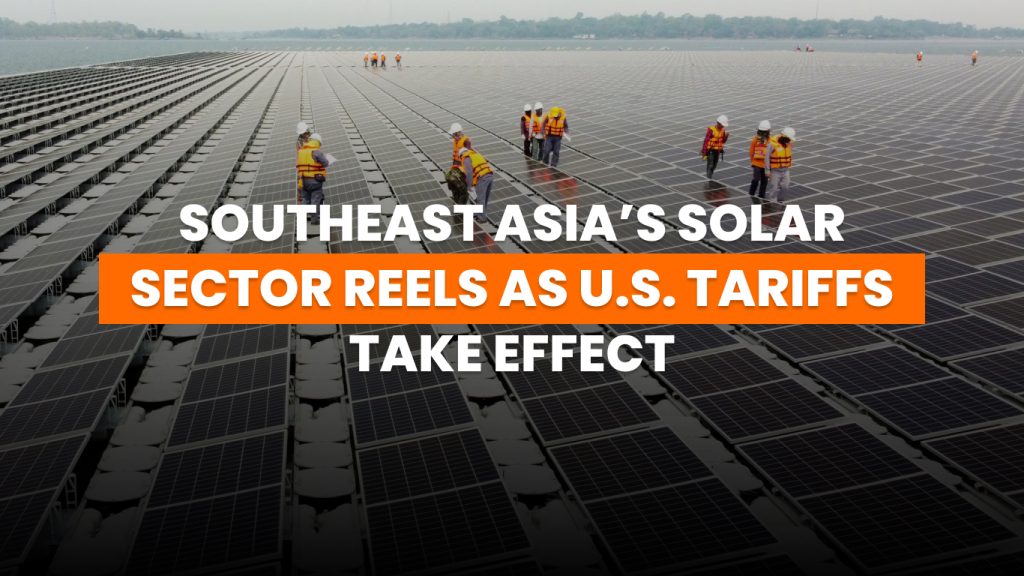In a significant blow to Southeast Asia’s renewable energy industry, solar manufacturers across Thailand, Vietnam, Malaysia, and Cambodia are shutting down operations as sweeping U.S. tariffs on solar imports take effect this week.
Thousands of workers are now out of jobs after U.S. Customs and Border Protection began enforcing tariffs as high as 3,500 percent on solar panels exported from the region. The new policy, backed by President Donald Trump, is part of a broader strategy targeting Chinese-owned factories accused of circumventing existing tariffs by routing exports through Southeast Asia.
According to Al Jazeera, solar exports from the region—accounting for roughly 80 percent of U.S. solar imports—have been a critical part of the global renewable supply chain. Thai solar exports alone were valued at more than $3.7 billion in 2023.
The impact was immediate. Standard Energy Co., a Singaporean-owned solar firm operating in Rayong, Thailand, shut down its $300 million facility with little warning. Employees, including 33-year-old Chonlada Siangkong, received abrupt termination notices without compensation. “We were all shocked,” Chonlada told Al Jazeera. “The next day, they told us not to come to work.”
The U.S. Department of Commerce claims that firms such as Jinko Solar, Trina Solar, and Boviet have been using Southeast Asian subsidiaries to flood the U.S. market with low-cost solar products, undermining domestic manufacturers. The American Alliance for Solar Manufacturing Trade Committee led the lobbying effort behind the new levies, arguing that Chinese subsidies have distorted global prices and given their companies an unfair advantage.
Ben McCarron, managing director at Asia Research & Engagement, warned that some manufacturers are already exiting Southeast Asia altogether, raising concerns about long-term economic consequences. “The implications are significant,” he said. “Thailand, Vietnam, Cambodia, and Malaysia accounted for most of the U.S.’s solar imports in 2024.”
For governments in the region, the sudden shift could present an opportunity as well as a crisis. McCarron suggested that excess supply might be redirected into domestic solar markets, potentially accelerating local clean energy transitions. “If governments move quickly, this could become a cost-effective way to stimulate solar adoption at home,” he said.
Still, experts say the disruption will hit not only low-wage factory jobs but also skilled technicians across the supply chain. Tara Buakamsri of Greenpeace noted that downsizing in the sector could weaken national climate strategies. Thailand, for example, had committed to carbon neutrality by 2050 and net-zero emissions by 2065—goals that now appear more difficult to achieve.
Meanwhile, critics argue the tariffs may backfire on the United States itself. “Thailand’s solar cell production is heavily export-driven and the U.S. has historically been a major export destination,” said Pavida Pananond, professor at Thammasat Business School. “But these tariffs will also hurt American consumers and the green transition in the U.S. as prices become higher.”
With few options for relief and only limited avenues to appeal the new duties, Southeast Asia’s solar industry now finds itself in a precarious position—caught between geopolitical tensions and the urgent global push for cleaner energy.
Source: Al Jazeera
https://www.aljazeera.com/economy/2025/6/11/as-trumps-tariffs-loom-southeast-asias-solar-industry-faces-devastation




